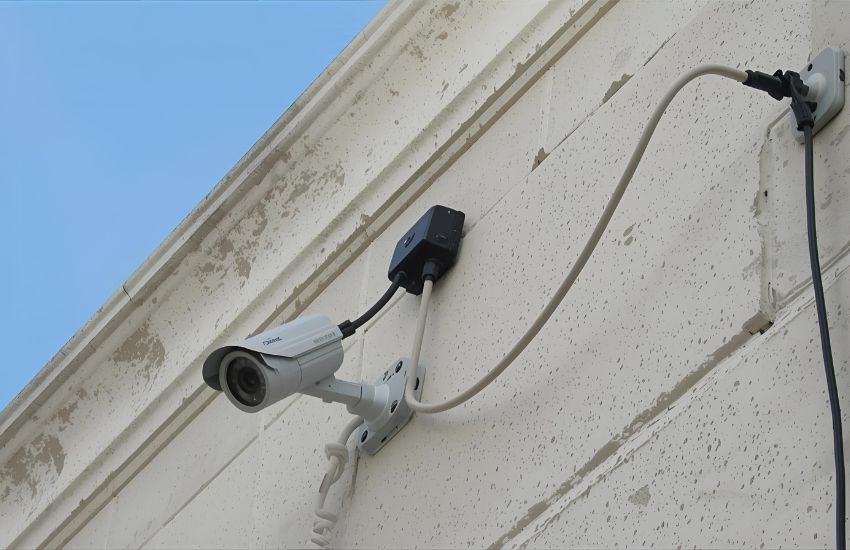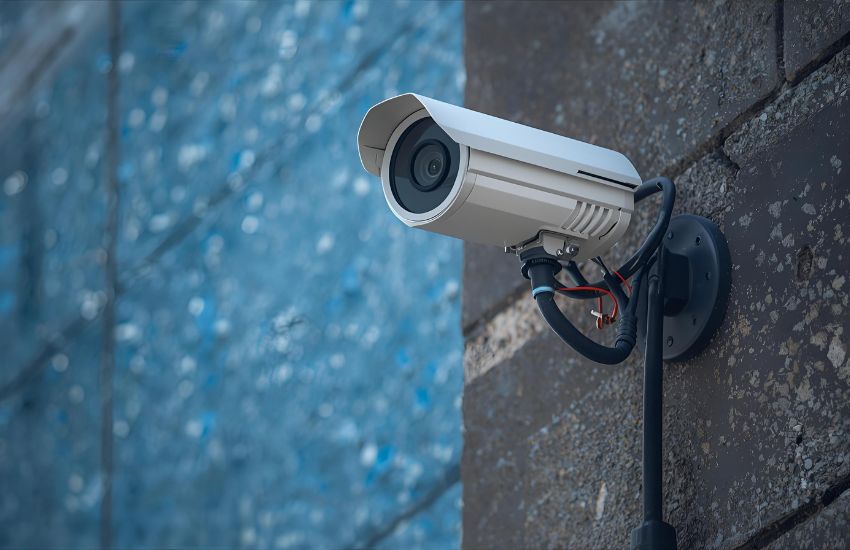Determining the optimal cable length for your CCTV camera setup is crucial to maintaining a strong and reliable video signal. Using the wrong type of cable or exceeding the maximum distance can lead to signal degradation, poor image quality, or even system failure. Whether you are installing a traditional analog camera system with coaxial cable or a modern IP camera relying on ethernet cable and power over ethernet (PoE), understanding the limits of cable runs and connectors is essential for a successful security camera installation.
The cable length for CCTV cameras depends on the cable type and camera specifications. Typically, coaxial cables like RG59 can run up to 300 feet without signal loss, while Cat5e/Cat6 cables for IP cameras support distances up to 328 feet. For longer distances, signal boosters or fiber optics are necessary to maintain video quality.
In this guide, you will learn about the maximum distance considerations for various cable types, how to choose the right cable for your CCTV camera system, and best practices to optimize your cable runs for effective surveillance.
Choosing the Right Cable Type for CCTV Camera Installations: Coaxial, Ethernet, and Siamese Cable Essentials

Selecting the appropriate cable type is fundamental to the success of your camera installations. The cable length and quality directly influence the signal quality, video resolution, and overall performance of your security camera system. Understanding the characteristics and limitations of each cable type will help you design an efficient and reliable setup.
Coaxial Cable and RG59: The Traditional Choice for Analog CCTV
For analog CCTV camera installations, the most commonly used security camera cable is the RG59 coax cable. This type of cable is designed to transmit video signals effectively over moderate cable distances, typically up to 100 meters without significant signal loss. When running longer cable lengths, you may need to incorporate video amplifiers or video baluns to maintain signal quality. The coax cable’s durability and shielding help minimize interference, making it a trusted choice for many DVR-based analog CCTV systems.
Siamese Cable: Combining Power and Video in One Run
If your installation requires both power and video transmission over a single cable run, the siamese cable is an ideal solution. It integrates a coax cable for video transmission and a power cable for supplying electricity to the camera. This combination simplifies installation by reducing the number of cables you need to manage, which is especially useful in complex or extensive camera installations. However, be mindful of voltage drop when dealing with longer cable lengths, as it can affect camera performance.
Ethernet and Other Cable Types: Modern Alternatives for IP Cameras
While coax and siamese cables dominate analog CCTV systems, IP cameras typically use ethernet cables to transmit both data and power via Power over Ethernet (PoE). Although not covered extensively here, it’s important to consider cable length limitations and quality when planning IP camera installations to prevent signal degradation.
Key Considerations for Your Cable Length Guide
Whatever cable type you choose, always refer to a reliable cable length guide to ensure your cable runs do not exceed the maximum cable distance supported by your equipment. Exceeding these limits can lead to signal loss, reduced video resolution, and compromised security. Selecting a high-quality security camera cable and planning your cable length carefully will help you build a robust and effective surveillance system.
See more about...VMS Software for CCTV
Understanding Cable Length Limits for Reliable PoE Security CCTV Camera Video max Installation guide

When planning your security camera installation, understanding cable length and maximum distance is vital to maintaining high-quality video transmission and reliable camera power. The type of cable used plays a significant role in how far you can run CCTV camera video signals without degradation. Different types of cables—such as coaxial cables for analog CCTV or network cables for IP camera installations—have specific maximum distances that affect video and power delivery.
Determining the maximum distance for your cable run depends on the cable type and the equipment involved. For example, coaxial cables are commonly used for analog CCTV systems to transmit video and power over a single cable between the camera and a DVR. However, these cables have range limitations, and longer cable runs may result in signal loss or reduced video quality. To extend the range of coaxial cables, video amplifiers or extenders can be used, but it is essential to adhere to manufacturer guidelines for maximum cable length to avoid issues.
For IP camera installations, network cables carry both video surveillance data and camera power via Power over Ethernet (PoE). Although PoE simplifies cable installation by using a single cable for both functions, it also has maximum distances—typically up to 100 meters per run. When longer cable runs are necessary, additional equipment such as PoE extenders or switches is required to maintain power and video transmission quality.
Cable installation must also consider the distance for power delivery, as insufficient power can cause cameras to malfunction or shut down. Selecting the best cable type and maintaining cable length within recommended maximum distances will ensure that your video signals remain clear and your cameras function reliably. Whether you run cables for commercial security camera systems or residential wire CCTV cameras, careful planning is essential to preserve video quality and system performance over long cable runs.
See more about…CCTV Camera Pros Coupon Code
Conclusion
When it comes to distance and cable selection for your security camera system, understanding that the cable must meet specific requirements is essential for optimal performance. The quality and type of cable you choose directly affect how well your camera transmits various video signals and receives power. If the cable has already been installed, it is important to assess whether it supports the necessary length and signal integrity for your setup. Ultimately, the success of running your camera locally or over longer distances depends on selecting the right cable type and adhering to maximum cable length guidelines. Making informed decisions ensures a reliable, high-quality video surveillance system that meets your security needs effectively.
See more about…Mac Compatible CCTV DVR
Frequently Asked Questions (Cable Length Guide for CCTV Camera video max : Maximum Distance and Security Essentials)
What is the maximum distance range of a CCTV camera?
The maximum distance range of a CCTV camera depends on its type and lens. Standard CCTV cameras can capture clear images up to 30 to 40 meters, while high-end long-range cameras with powerful lenses and infrared (IR) technology can monitor distances up to 200 to 500 meters, depending on lighting and environmental conditions.
How far can you run security camera cable?
The maximum distance for running a security camera cable depends on the cable type. For analog CCTV using coaxial cable (RG59), the range is up to 300 meters (1,000 feet). For Cat5e or Cat6 Ethernet cables used with IP cameras, the maximum distance is typically 100 meters (328 feet) without a signal booster or repeater.
What is the maximum distance for Cat6 cable for CCTV?
The maximum distance for a Cat6 cable used in CCTV systems is typically 100 meters (328 feet). This includes 90 meters of solid cable between devices and 10 meters for patch cords. Beyond this range, video quality and data transmission may degrade, so network switches or signal boosters are recommended for longer runs.
What size cable is needed for CCTV camera?
For CCTV cameras, RG59 coaxial cable with a 2-core power cable (often called RG59 Siamese cable) is most commonly used. It efficiently carries both video and power signals up to 300 meters. For IP cameras, Cat5e or Cat6 Ethernet cables are recommended, supporting Power over Ethernet (PoE) connections up to 100 meters.
